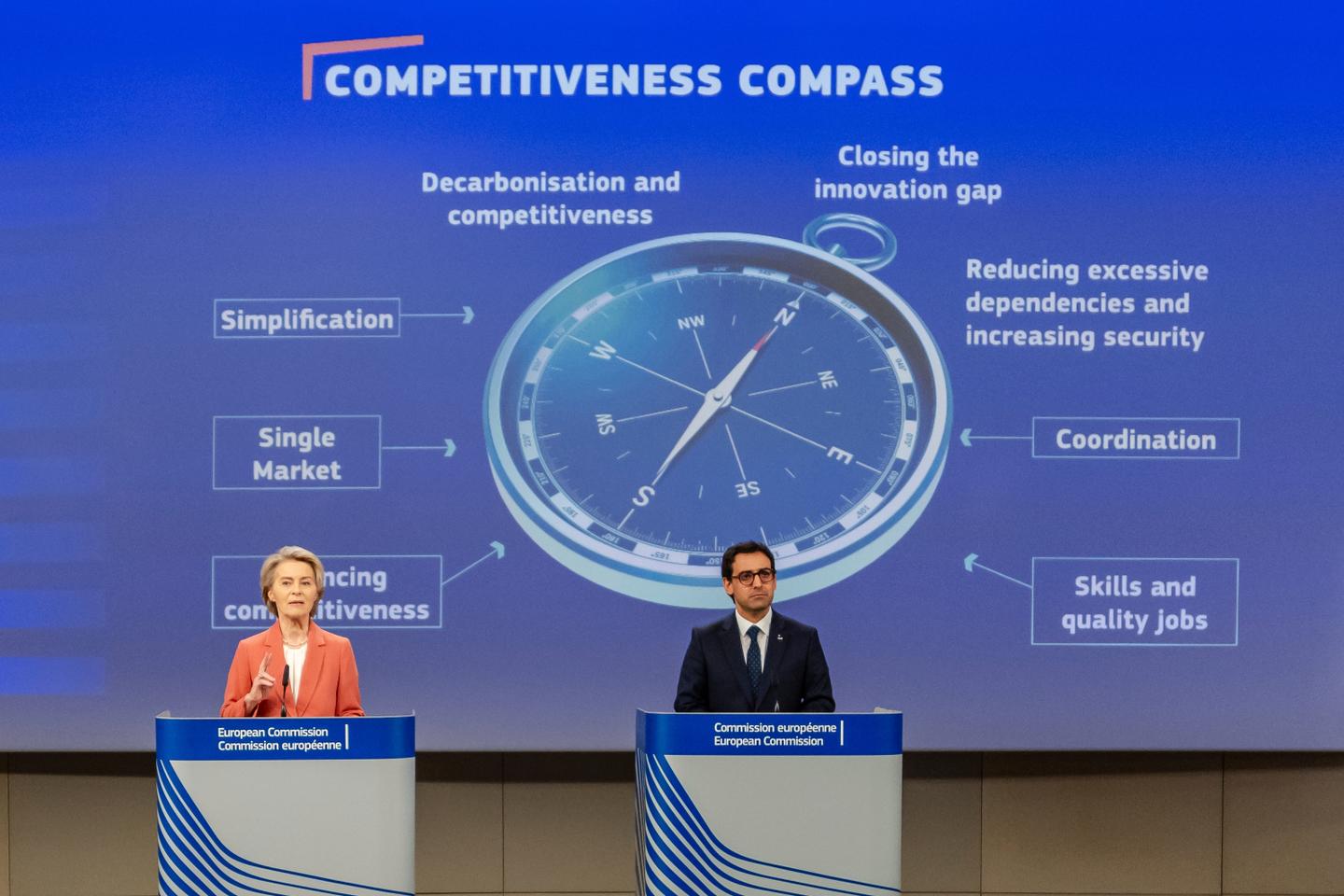
On Wednesday, January 29, the European Commission unveiled a « Competitiveness Compass, » a sort of roadmap to try and halt the 27 member states’ economy decoupling from the US and China. The aim is to respond to the diagnosis set out in the Mario Draghi report and one by Enrico Letta, published a few months ago, on the breakdown of growth and the innovation deficit that Europe has been experiencing for more than 20 years.
Brussels is announcing some 20 legislative proposals to be debated and adopted by member states between now and 2027. This agenda has three main aims: to lighten European regulations, deemed too restrictive for businesses; to stimulate innovation and the development of new technologies; and finally, to reduce the fragmentation of strategic markets such as energy, defense and finance.
In other words, the European Union (EU) is seeking to move from a regulation-based model to a more offensive one, capable of guaranteeing its sovereignty.
Europe is finally setting a course. All that remains is for it to get moving. But while intentions are good, implementation is far from obvious. The Commission claims that simplification is not the same as deregulation. There is a fine line to be drawn here, and it needs to be made clear how procedures can be simplified without abandoning the objectives of the Green Deal adopted by the previous legislature. Putting that work back on the drawing board runs the risk of significant setbacks, at a time when the political balance in the European Parliament has shifted significantly, in the wake of the recent European elections, in favor of a questioning of the bloc’s climate agenda.
On the defensive
The Commission also promises to . This project, launched in 2014, aims to bring about a more integrated European financial system. The aim is to redirect European savings to strengthen corporate equity, in order to finance innovation and the environmental transition. But a single system of supervision and harmonized taxation still needs to be put in place, without which integration won’t happen.
The strategy presented shows that the EU has grasped what’s at stake. The question of financing remains. The Draghi report estimated that €800 billion are needed each year to get the European economy back on track. Ursula von der Leyen, the Commission president, has ruled out the idea of joint financing by the member states, which Germany and the Netherlands do not want. She merely mentioned a competitiveness fund, which could be set up in 2028 in the next EU budget, without specifying its amount or how it might be financed.
Europe is finally waking up, but its ambitions have yet to be realized. The call for greater simplification is more a mea culpa for having over-regulated in the past than a genuine culture change. Despite its determination, Europe is still on the defensive. Brussels has scarcely begun to react to the US and China’s massive subsidy policies, and now they have to find a response to Donald Trump’s aggressive stance. In a rapidly changing and hostile world, the EU must quickly agree on a precise project, regain a taste for risk and the desire to achieve things as a group. A compass gives direction, but is no guarantee of arriving safely at port.
Poster un Commentaire